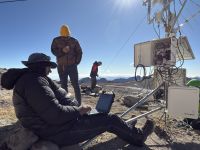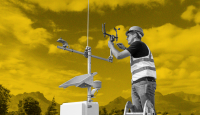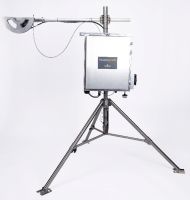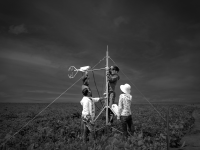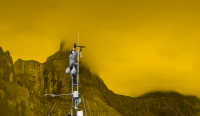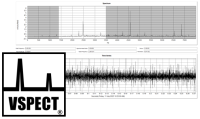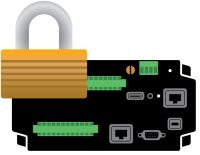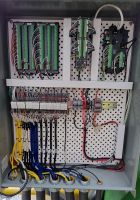The Campbell Scientific Blog Your source for useful how-to information and helpful expert advice
Displaying 1 - 20 of 181 articles
How to Keep Your Data Safe with PakBus® Encryption: Part 3
Author: Shaurya Rastogi | Last Updated: 12/15/2025 | Comments: 0
In this third and final blog article in the series, I'll share with you some more practical steps that you can take to keep your automated monitoring platform secure. If you missed my first article about PakBus encryption or want to review it again, please... read moreMeasuring What Mattered in 2025
Author: Aspen Nielsen | Last Updated: 12/08/2025 | Comments: 0
While many people look back at playlists this time of year, we look back at what the data revealed: how decisions were made, how resources were saved, and how scientific progress was shaped. Around the world, Campbell Scientific systems recorded the data behind critical decisions... read moreFrom Local Insights to Global Standards: How to Choose the Right Weather Station for You
Author: Jamie McDonald | Last Updated: 12/01/2025 | Comments: 0
When it comes to weather and environmental observations, one weather station size won’t work for all scenarios. Whether you’re running a single research site, scaling up to a regional network, or managing a national meteorological network, selecting the right type of weather station can make... read moreHow to Keep Your Data Safe with PakBus® Encryption: Part 2
Author: Shaurya Rastogi | Last Updated: 11/17/2025 | Comments: 0
In this second blog article in the series, I'll share with you additional practical steps that you can take to keep your automated monitoring platform secure. If you missed my first article about PakBus encryption or want to review it again, please read How to... read moreA Beginner's Guide to Automated Weather Stations (AWS)
Author: Aspen Nielsen | Last Updated: 11/10/2025 | Comments: 2
When weather impacts decisions, safety, livelihoods, and research, there is no room for guesswork. The modern world depends on data, including accurate weather information. While “data-driven decisions” is often treated like a buzzword, in the field it means the difference between reacting with uncertainty and... read moreHow to Keep Your Data Safe with PakBus® Encryption: Part 1
Author: Shaurya Rastogi | Last Updated: 11/03/2025 | Comments: 0
In today’s connected world, protecting your data is more important than ever, especially when it comes to environmental, industrial, or scientific monitoring. If you’re using an automated monitoring platform (also known as a data-acquisition system or data logger) from Campbell Scientific, strong security practices safeguard... read moreUnique Features and Benefits of the FluoreSens™10 for SIF Measurements
Author: Prajaya Prajapati | Last Updated: 10/30/2025 | Comments: 0
Monitoring terrestrial photosynthesis at canopy and ecosystem scales is key to improving our understanding of the global carbon cycle, vegetation stress, and climate feedback. Over the past decade, measuring sun-induced chlorophyll fluorescence (SIF) has emerged as one of the most promising tools for quantifying photosynthetic... read moreSeeing the Unseen: 3 Best Practices to Optimize Your Eddy Flux Measurements
Author: Aspen Nielsen | Last Updated: 10/14/2025 | Comments: 0
What is around you that you cannot see with your naked eye? This question might invoke images of distant galaxies, known only by state-of-the-art telescopes. Or, perhaps, you think about infrared or ultraviolet light, only visible through specialized cameras. Maybe microorganisms studied through a microscope in... read moreThe Recipe for Safer Skies: 5 Role-Based Dashboards for Aviation Weather
Author: Aspen Nielsen | Last Updated: 09/18/2025 | Comments: 0
Running an airport with the wrong decision support software is like trying to prepare a gourmet five-course meal with a dull knife and a camping stove. Technically, it’s possible. Operationally, it’s risky, inefficient, and far more stressful than it needs to be. Trusted by airports around the globe,... read moreAVW200 and Secure by Default: What You Need to Know
Author: Eric Schmidt | Last Updated: 08/28/2025 | Comments: 0
Cybersecurity isn’t just a buzzword. It’s an everyday priority. In today’s world, where data privacy is critical, keeping your monitoring systems secure is just as important as keeping them accurate. That’s why we at Campbell Scientific introduced Secure by Default—an initiative designed to strengthen data... read moreThe 0.1°C Challenge: The Heat on Temperature Sensors that Meet WMO Recommendations
Author: Aspen Nielsen | Last Updated: 08/22/2025 | Comments: 2
Whether you’re tracking climate change, assessing floods, monitoring glacial retreat, or making critical decisions about aircraft take-offs, temperature data play a central role. Air temperature directly influences a wide range of atmospheric and environmental conditions, including humidity, pressure, and wind patterns. Accurate temperature measurements are... read moreBeyond the Numbers: Getting the Most Out of VSPECT® Diagnostics
Author: Colin Archambault | Last Updated: 08/19/2025 | Comments: 0
If you're using VSPECT® technology for your vibrating wire measurements, how do you validate each measurement's quality? VSPECT technology is designed to do more than just read a number—it helps you understand the quality behind every measurement. By going beyond the natural frequency of a vibrating... read more6 Essentials to Help Emergency Managers Design Better Flood Warning Systems
Author: Jamie McDonald | Last Updated: 08/15/2025 | Comments: 0
Floods remain one of the most damaging and fast-moving natural disasters worldwide. For emergency managers tasked with protecting lives and property, a well-designed flood warning system is not simply a tool but a critical part of their public safety infrastructure. Designing or upgrading such a system,... read moreWhy Is ALERT2 the Wave of the Future for Flood Alerts?
Author: Jamie McDonald | Last Updated: 08/08/2025 | Comments: 0
When flooding happens, every second matters. Intense rainfall can quickly cause rivers to rise above flood stage, and the difference between property damage and a life saved often comes down to the speed and reliability of your warning system. While the original Automated Local Evaluation... read moreAWOS Explained: How These Systems Enhance Airport Safety and Efficiency
Author: Aspen Nielsen | Last Updated: 07/16/2025 | Comments: 0
As an aviation professional, when you think about weather safety, what comes to mind? Maybe you think about managing growing stacks of flights at various altitudes while anxiously awaiting clearer weather for safe landings. Or maybe you are concerned about aircraft braking performance affected by water... read moreBreaking Down the AtmosVue™30 Specifications (what they actually mean)
Author: Aspen Nielsen | Last Updated: 06/30/2025 | Comments: 0
When you look at a spec sheet for a weather sensor such as the AtmosVue™30, you’re typically presented with a lot of numbers and technical terms. For example, these might include: Present weather outputs Background luminance measurement range Operating temperature range But what does all this actually... read moreIs a Game-Changing Upgrade in Your Future?
Author: Brett Hansen | Last Updated: 06/04/2025 | Comments: 0
As a hydrologist or emergency manager, do you need faster, more reliable, and higher resolution data from your flood warning system? If your current system uses the ALERT protocol, now may be the time to upgrade to a system that uses the ALERT2 protocol. In... read moreCutting Through the Jargon: Your Instrumentation Terminology Guide
Author: Eric Schmidt | Last Updated: 04/29/2025 | Comments: 0
When I first got into the world of instrumentation and monitoring, I quickly realized just how much jargon was floating around. It felt like there were a dozen different ways to describe the same thing. Half the time, I wasn’t sure if the person I... read moreHow to Use Data Logger Security Codes
Author: Janet Albers | Last Updated: 03/04/2025 | Comments: 4
Security codes are the oldest method of securing a data logger. They can effectively prevent innocent tinkering and discourage wannabe hackers—actions that could potentially wreak havoc on the integrity of your data. In this article, I’ll discuss the different security codes and how to use... read moreHow do you know if your CR6 is maxed out?
Author: Eric Schmidt | Last Updated: 02/18/2025 | Comments: 1
Just how many AM16/32B multiplexers can you really add to your CR6 Automated Monitoring Platform? At what point do you hit the limit? What is truly safe? As an Application Engineer in Campbell Scientific’s Infrastructure Group, I get a lot of customer questions about squeezing the... read more













